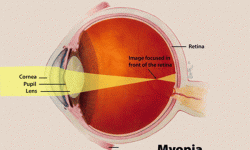Determining the Effective Treatment for Abdominal Pain
Abdominal Pain is a symptom instead of a disease. Therefore, if you are feeling pain in the abdomen area, which is an area lower to your ribs up to your groin, you first need to know what exactly is causing it. However, abdominal pain in itself is a pretty broad symptom which could be caused by virtually anything. Abdominal pain could be caused for a number of reasons and these could be different for both men and women.
Major Types of Abdominal Pain
Abdominal pain does not always originate from that region but could even be triggered from adjoining organs such as the kidneys in the lower back and the stomach in the upper abdominal portion.
Abdominal pain can be of two major types, that is localized and concentrated pain and pain originated from adjoining organs. A localized and concentrated pain is usually a sign of a more serious problem particular to that area. Sometimes abdominal pain occurs at certain times such as between meals or even in the morning. Morning stomach pains are usually caused by indigestion, gas and food allergies. Morning abdominal pains may even be a sign of ulcers.

There are a number of conditions that could cause pain in the abdomen. These include indigestion, food poisoning, food allergies, gas, Irritable Bowl Syndrome, pelvic inflammatory disease, Lactose intolerance, ulcers, Crohn’s disease, Ulcerative Colitis, Diverticulitis, Gastroesophageal Reflux Disease, Hernia and Appendicitis. Sore stomach during pregnancy and menstrual cramps are often experienced by women.
Diagnosis of Abdominal Pain
There are quite a few diseases that are associated with Abdominal Pain. However, the intensity of the pain and the location are critical for the physician to diagnose what this pain could actually mean. However, there are other important factors worth considering such as the frequency of pain and the total duration for which a patient has been experiencing such pain. In the diagnosis, the physician would even ask the patient about any possible injuries, medicine intake and if anything they have tried to relieve the pain.
If abdominal pain is accompanied by several other symptoms such as fever, blood in stool, vomiting, tenderness to touch, blood vomiting and painful urination. Abdominal pain during pregnancy can be dangerous as well. Some pregnant women have a risk of developing femoral hernia. If considered appropriate, your physician may recommend tests such as Bactrium X-ray, colonoscopy, CT scans, video capsule endoscopy, stool sample tests, blood tests and red and white blood cell count in order to have a clear idea about the underlying cause of the pain.
Some of the more serious diseases that cause abdominal pain are Inflammatory Bowels Disease which includes Crohn’s Disease and Ulcerative Colitis, Diverticulitis, ulcers, Hernia and Appendicitis.
Symptoms to Check If You Need Further Examination
There are quite a few symptoms that you should know about in order to be sure whether you are safe from more serious diseases causing abdominal pain or not. Study the list and compare with your symptoms to see if you want yourself further examined by a physician.
-
Crohn’s Disease
Abdominal Pain, Diarrhea, Loss in Appetite, Fever, Weight Loss, Sores in Mouth, Bowel Obstruction, Nutritional Deficiencies. May also develop: Anemia, Fistula or Abnormal Openings between Intestines or Internal Organs, Abscesses, Skin tags, Bowl Obstruction, Joint Pain, Skin Rash, Eye Problems.
-
Ulcerative Colitis
Diarrhea, Rectal Bleeding, Abdominal Pain, Weight Loss, Constipation, Fever.
-
Diverticulitis
Abdominal Pain particularly to the left lower part of the abdomen increasing when touched, Severe cramps concentrated in the same area, Chills or Fever, Constipation, Diarrhea, Tenderness, Signs of Infection lasting from hours to several days. Rare Rectal Bleeding. Could lead to abscesses.
-
Ulcer
Burning Upper Abdominal Pain particularly in the mornings and between meals, Bloating, Heartburn, Nausea, Vomiting.
Hernia
Upper Abdominal Pain in case of Hiatal Hernia. Heartburn, swelling beneath the skin of the abdomen or the groin, Tenderness to touch, Heavy feeling in the Abdomen, Constipation, Bloating and discomfort when bending over.
Appendicitis
Starts with a dull pain near the navel and moves slowly to the lower right part of the abdomen becoming severe, Abdominal Pain followed by Nausea and/or Vomiting, Inability to Pass Gas, Abdominal Swelling. Other symptoms include Fever from 99°C to 102°C, Painful Urination, Severe Cramps, Constipation, Gas, and Diarrhea
Treatment of Abdominal Pain
The treatment of abdominal pain depends on its source and cause which are found out through a number of diagnostic tests and scans. Most of the time, medication is sufficient for relief in case of inflammation, ulcers and heartburn or GERD. Dietary reforms may also be recommended. Antibiotics are prescribed in case of infection. Some conditions such as Appendicitis and Hernia require surgery.
Newsletter
Get our Tips and Tricks to your Inbox



